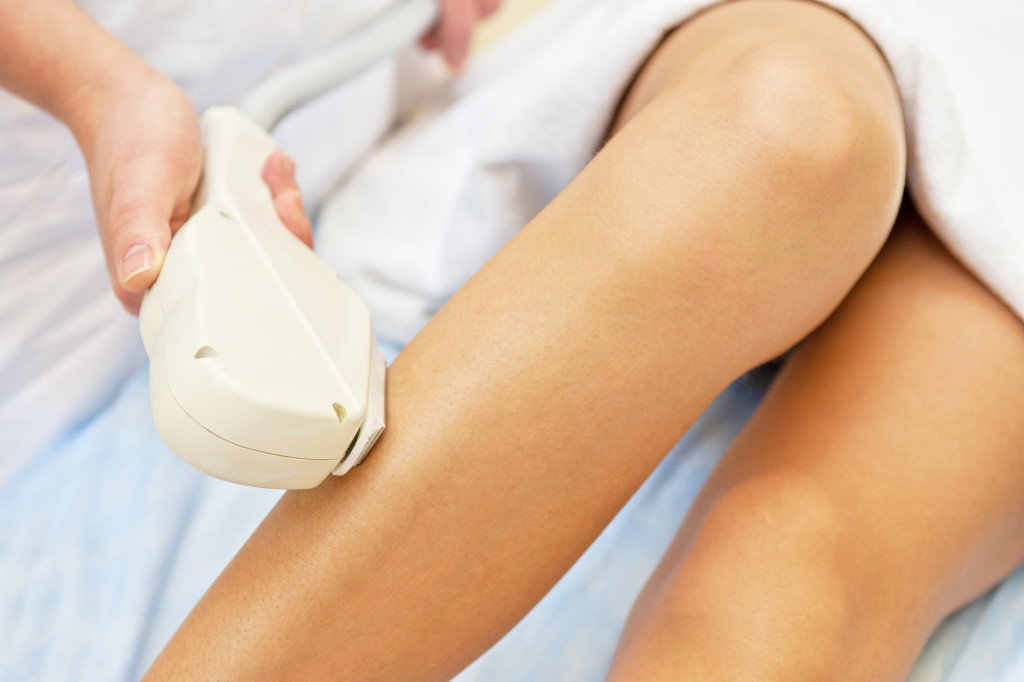Ingrown hair growth can be an unsightly and uncomfortable problem for many people. About 20-30% of people have this issue at some point in their lives, which is more common in people with coarse or curly hair. The main problem with ingrown hair growth is that the hair follicle can become irritated and infected, leading to pain, redness, and swelling. In severe cases, it can even cause scarring.
Here we’ll explore what causes ingrown hairs, how to deal with them, and some tips for preventing them in the future.
What Causes Ingrown Hairs?
Contrary to popular belief, ingrown hairs are not only caused by shaving. They can also result from tight clothing rubbing against the skin, which irritates the hair follicles and causes them to become inflamed. When this happens, the hair can grow back into the skin instead of up through it, causing ingrown hair. Irritation can also be caused by dead skin cells clogging up the hair follicles.
Women who shave their bikini lines are particularly susceptible to this problem since the bikini area is often irritated by tight clothing. Many people also experience ingrown hair growth on the back of their necks after getting a haircut. Because the hair is cut so close to the skin, it can easily become ingrown.
People with curly or coarse hair are also more likely to experience ingrown hairs. This is because the curled shape of the hair makes it more likely to grow back into the skin. This problem is compounded by the fact that curly hair is more likely to be dry and brittle, which makes it more susceptible to breakage.
Dealing With Ingrown Hairs
If you have ingrown hair, don’t try to pick it or pull it out. This will only further irritate the area and could lead to an infection. Instead, try using a warm compress to soften the skin and help bring the hair to the surface. Once the hair has surfaced, you can use a tweezer to remove it gently. Be sure to sterilize the tweezer with rubbing alcohol before using it on your skin.

If the warm compress doesn’t work or you have multiple ingrown hairs, you may need to see a doctor or dermatologist for treatment. They can prescribe antibiotics if there is any sign of infection and corticosteroids to reduce inflammation. Sometimes, they may also recommend laser hair removal as a long-term solution.
Some people also find relief from home remedies like applying tea tree oil or aloe vera to the affected area. These can help soothe the skin and reduce inflammation. If you decide to try a home remedy, do a patch test first to ensure you’re not allergic to the ingredients. A good rule of thumb is to start with a diluted solution and increase the concentration if necessary. This will help you avoid any irritation.
Preventing Ingrown Hairs
The best way to deal with ingrown hairs is to prevent them from happening in the first place. To do this, you need to take care when shaving or waxing any areas where you’re susceptible to them. Always use a sharp razor and shave in the direction your hair grows. If you’re waxing, ensure that you only wax small areas at a time to avoid irritating the skin too much.
It would be best if you also exfoliated regularly to prevent dead skin cells from clogging up your hair follicles. Exfoliating with a loofah or sugar scrub once or twice a week should be enough to keep the problem at bay. Just be sure not to exfoliate too vigorously, as this could irritate your skin.
If you have curly hair, you may also want to try using a depilatory cream instead of shaving or waxing. These creams dissolve the hair instead of cutting it, which can help prevent ingrown hairs.
Finally, avoid tight clothing in areas where you tend to get ingrown hairs. This will help reduce irritation and make it less likely that the hair will become ingrown. Common problem areas include the bikini line, back of the neck, and underarms. Wearing loose-fitting clothes made from breathable fabrics like cotton will help keep your skin healthy and free from irritation.
Ingrown hairs can be unsightly and uncomfortable, but they don’t have to be a part of your life forever! Following these simple tips can help you effectively deal with existing ingrown hairs and prevent future ones from forming. Always consult a doctor or dermatologist if you have concerns about your skin health. They can help you create a customized treatment plan to address your needs.




